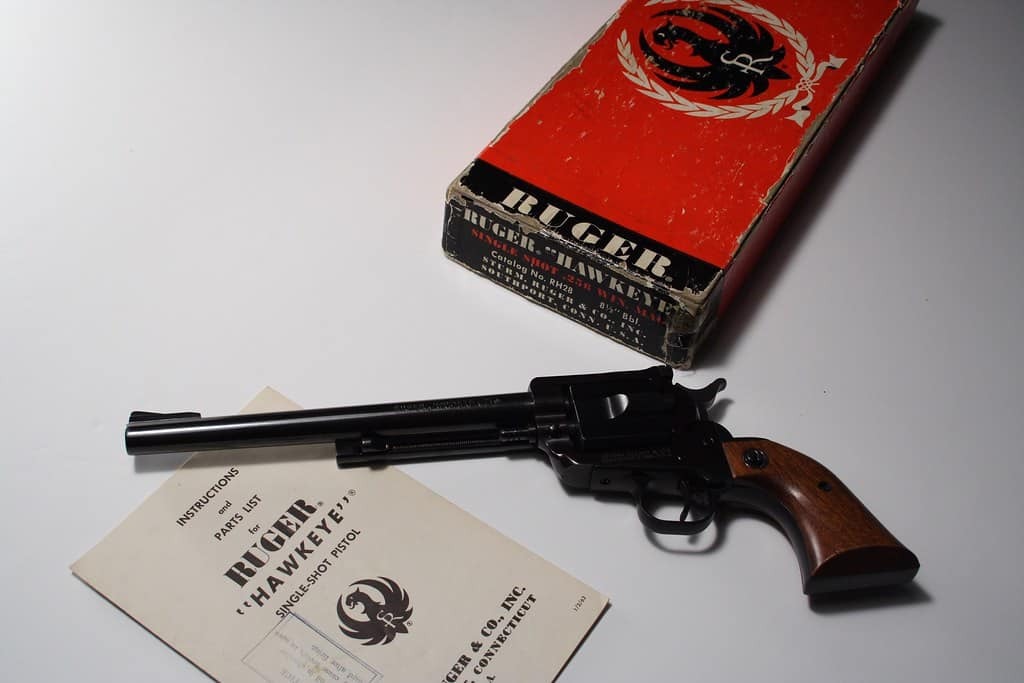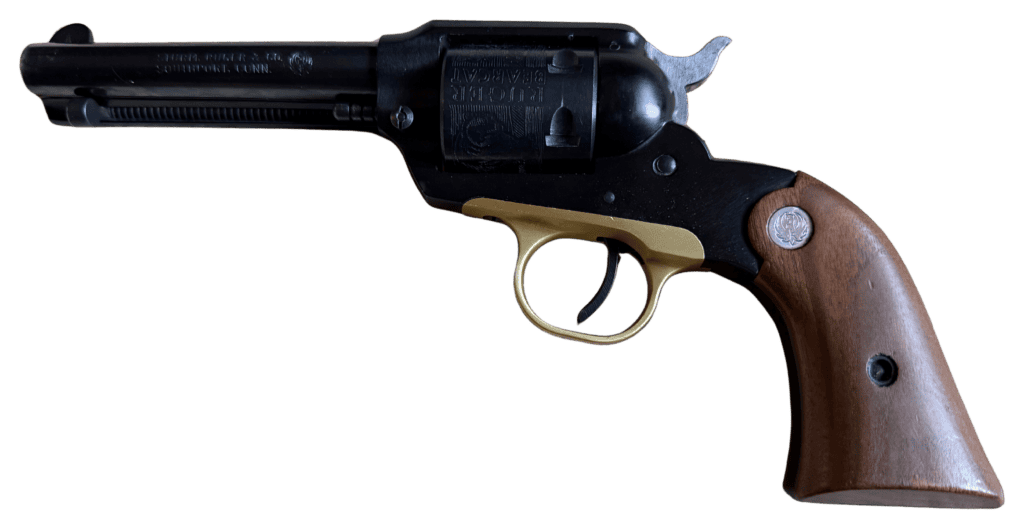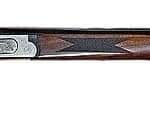
Introduction
Sturm, Ruger & Co., Inc., commonly referred to as Ruger, is one of the most influential American firearm manufacturers, known for its commitment to innovation, quality, and affordability. Founded in 1949 by William B. Ruger and Alexander McCormick Sturm, the company has grown from a modest startup into a dominant force in the industry. With a diverse portfolio that spans semi-automatic pistols, revolvers, rifles, and carbines, Ruger has cemented itself as a household name among shooting enthusiasts, law enforcement, and hunters.
The Founding Years and Early Success
The origins of Sturm, Ruger & Co. trace back to the ingenuity of William B. Ruger, a talented firearms designer with an affinity for mechanical precision. Ruger had previously experimented with redesigning surplus Japanese Nambu pistols before conceiving a new, more affordable firearm for the American market.
In 1949, Alexander Sturm, a Yale-educated artist and financial backer, invested $50,000 into Ruger’s vision, providing the capital necessary to launch their first product: the Ruger Standard Model .22LR Pistol. This firearm, inspired by the German Luger P08 and Japanese Nambu Type A, was an instant success due to its affordability, reliability, and innovative design.
The Standard Model’s groundbreaking investment casting process allowed for precision manufacturing at a fraction of the cost of traditional forging, making Ruger’s pistols both cost-effective and durable. By 1951, the company was already profitable, but tragedy struck when Alexander Sturm passed away at the age of 28. As a tribute, Ruger changed the company’s red phoenix logo to black, a symbol that remains an integral part of Ruger’s brand identity today.
Expansion into Rifles, Revolvers, and Carbines
After the success of the Standard Pistol, Ruger rapidly expanded its firearm lineup to include a diverse array of rifles, revolvers, and carbines, many of which became legendary in their own right.
Ruger 10/22 (1964): The Benchmark of .22 Rifles

The Ruger 10/22, introduced in 1964, revolutionized the rimfire rifle market. Key features such as its detachable rotary magazine, lightweight construction, and ease of customization made it one of the best-selling semi-automatic .22 rifles in history.
- Over 7 million 10/22 rifles have been sold to date.
- It remains a favorite among hunters, sport shooters, and survivalists.
- Ruger’s aftermarket support for the 10/22 is unparalleled, making it one of the most customizable firearms in existence.
Ruger Mini-14 (1973): A Modernized Ranch Rifle

The Mini-14, released in 1973, was designed as a scaled-down version of the M14 battle rifle, chambered in .223 Remington (5.56 NATO). Its reliability, light weight, and semi-automatic action made it popular with ranchers, law enforcement, and even military forces worldwide.
Notable aspects of the Mini-14 include:
- Rugged and reliable design, ideal for harsh conditions.
- Used by law enforcement agencies, including some overseas military units.
- Widely adopted for pest control, homestead defense, and tactical applications.
Ruger No. 1 (1967): The Ultimate Single-Shot Rifle
For those who appreciate the precision and craftsmanship of single-shot rifles, the Ruger No. 1 remains a premier choice. Introduced in 1967, it features a falling block action, renowned for its strength and accuracy. It is a favorite among big-game hunters and traditionalists who appreciate the challenge of a single-shot hunting rifle.
Dominance in the Handgun Market
While Ruger’s rifles have earned their place in history, the company’s revolvers and semi-automatic pistols are equally celebrated.
Ruger Blackhawk (1955): The Return of the Single-Action Revolver
The Ruger Blackhawk, introduced in 1955, reinvigorated interest in single-action revolvers. Designed to handle high-pressure loads like .357 Magnum and later .44 Magnum, it was built using modern steel alloys, making it significantly stronger than its Colt Single Action Army predecessor.
Ruger GP100 (1985): The Workhorse Revolver
The GP100 became one of the most durable and widely used double-action revolvers in history. Designed with a triple-locking cylinder and a full-length underlug barrel, it provides superior accuracy and strength.
- One of the most popular .357 Magnum revolvers.
- Preferred by security personnel, enthusiasts, and hunters.
- Modular grip system allows for easy customization.
Ruger LCP (2008): Concealed Carry Excellence
The Ruger LCP (.380 ACP) changed the concealed carry market when it was released in 2008. Weighing just 9.6 ounces, it became a favorite among self-defense users looking for a lightweight, reliable, and compact pistol.
Industry Innovations and Manufacturing Prowess
Ruger is widely credited for pioneering investment casting in firearm production, a process that:
- Reduces production costs without sacrificing durability.
- Enables complex designs to be manufactured with greater precision.
- Became an industry standard for modern firearm manufacturing.
Additionally, Ruger has been instrumental in advancing proprietary cartridges such as:
- .204 Ruger – Developed in partnership with Hornady, it is the fastest factory-produced .20 caliber cartridge.
- .480 Ruger – A powerful big-game handgun cartridge, introduced in 2003.
- .327 Federal Magnum – A high-pressure revolver cartridge designed for enhanced velocity and stopping power.
Ruger vs. The Competition
Ruger faces fierce competition from industry giants such as Smith & Wesson, Glock, Beretta, and SIG Sauer. However, Ruger distinguishes itself through:
- Affordability – Ruger firearms are often priced lower than competitors without sacrificing quality.
- Durability – Renowned for their "built like a tank" reputation, particularly in revolvers and rifles.
- Market Focus – Unlike Glock and SIG Sauer, which cater to law enforcement and military contracts, Ruger focuses on civilian shooters, hunters, and sport enthusiasts.
Financial Strength and Market Presence
As a publicly traded company (NYSE: RGR), Ruger maintains a strong financial position, with annual revenues consistently in the hundreds of millions. Unlike Remington and Colt, which have struggled with bankruptcy, Ruger has thrived by avoiding military dependence and focusing on consumer sales.
Conclusion
From its humble beginnings in 1949 to its status as one of America’s largest firearm manufacturers, Ruger’s legacy is built on innovation, affordability, and reliability. With legendary firearms such as the 10/22, Mini-14, Blackhawk, GP100, and LCP, Ruger continues to shape the firearms industry. As the company moves forward, its commitment to quality and groundbreaking firearm designs ensures that it remains a dominant force in the shooting world for decades to come.

Sturm, Ruger & Co.: A Comprehensive History and Industry Impact
Introduction
Sturm, Ruger & Co., Inc., commonly referred to as Ruger, is one of the most influential American firearm manufacturers, known for its commitment to innovation, quality, and affordability. Founded in 1949 by William B. Ruger and Alexander McCormick Sturm, the company has grown from a modest startup into a dominant force in the industry. With a diverse portfolio that spans semi-automatic pistols, revolvers, rifles, and carbines, Ruger has cemented itself as a household name among shooting enthusiasts, law enforcement, and hunters.
The Founding Years and Early Success
The origins of Sturm, Ruger & Co. trace back to the ingenuity of William B. Ruger, a talented firearms designer with an affinity for mechanical precision. Ruger had previously experimented with redesigning surplus Japanese Nambu pistols before conceiving a new, more affordable firearm for the American market.
In 1949, Alexander Sturm, a Yale-educated artist and financial backer, invested $50,000 into Ruger’s vision, providing the capital necessary to launch their first product: the Ruger Standard Model .22LR Pistol. This firearm, inspired by the German Luger P08 and Japanese Nambu Type A, was an instant success due to its affordability, reliability, and innovative design.
The Standard Model’s groundbreaking investment casting process allowed for precision manufacturing at a fraction of the cost of traditional forging, making Ruger’s pistols both cost-effective and durable. By 1951, the company was already profitable, but tragedy struck when Alexander Sturm passed away at the age of 28. As a tribute, Ruger changed the company’s red phoenix logo to black, a symbol that remains an integral part of Ruger’s brand identity today.
Expansion into Rifles, Revolvers, and Carbines
After the success of the Standard Pistol, Ruger rapidly expanded its firearm lineup to include a diverse array of rifles, revolvers, and carbines, many of which became legendary in their own right.
Ruger 10/22 (1964): The Benchmark of .22 Rifles
The Ruger 10/22, introduced in 1964, revolutionized the rimfire rifle market. Key features such as its detachable rotary magazine, lightweight construction, and ease of customization made it one of the best-selling semi-automatic .22 rifles in history.
- Over 7 million 10/22 rifles have been sold to date.
- It remains a favorite among hunters, sport shooters, and survivalists.
- Ruger’s aftermarket support for the 10/22 is unparalleled, making it one of the most customizable firearms in existence.
Ruger Mini-14 (1973): A Modernized Ranch Rifle
The Mini-14, released in 1973, was designed as a scaled-down version of the M14 battle rifle, chambered in .223 Remington (5.56 NATO). Its reliability, light weight, and semi-automatic action made it popular with ranchers, law enforcement, and even military forces worldwide.
Notable aspects of the Mini-14 include:
- Rugged and reliable design, ideal for harsh conditions.
- Used by law enforcement agencies, including some overseas military units.
- Widely adopted for pest control, homestead defense, and tactical applications.
Ruger No. 1 (1967): The Ultimate Single-Shot Rifle
For those who appreciate the precision and craftsmanship of single-shot rifles, the Ruger No. 1 remains a premier choice. Introduced in 1967, it features a falling block action, renowned for its strength and accuracy. It is a favorite among big-game hunters and traditionalists who appreciate the challenge of a single-shot hunting rifle.
Dominance in the Handgun Market
While Ruger’s rifles have earned their place in history, the company’s revolvers and semi-automatic pistols are equally celebrated.
Ruger Blackhawk (1955): The Return of the Single-Action Revolver
The Ruger Blackhawk, introduced in 1955, reinvigorated interest in single-action revolvers. Designed to handle high-pressure loads like .357 Magnum and later .44 Magnum, it was built using modern steel alloys, making it significantly stronger than its Colt Single Action Army predecessor.
Ruger GP100 (1985): The Workhorse Revolver
The GP100 became one of the most durable and widely used double-action revolvers in history. Designed with a triple-locking cylinder and a full-length underlug barrel, it provides superior accuracy and strength.
- One of the most popular .357 Magnum revolvers.
- Preferred by security personnel, enthusiasts, and hunters.
- Modular grip system allows for easy customization.
Ruger LCP (2008): Concealed Carry Excellence
The Ruger LCP (.380 ACP) changed the concealed carry market when it was released in 2008. Weighing just 9.6 ounces, it became a favorite among self-defense users looking for a lightweight, reliable, and compact pistol.
Industry Innovations and Manufacturing Prowess
Ruger is widely credited for pioneering investment casting in firearm production, a process that:
- Reduces production costs without sacrificing durability.
- Enables complex designs to be manufactured with greater precision.
- Became an industry standard for modern firearm manufacturing.
Additionally, Ruger has been instrumental in advancing proprietary cartridges such as:
- .204 Ruger – Developed in partnership with Hornady, it is the fastest factory-produced .20 caliber cartridge.
- .480 Ruger – A powerful big-game handgun cartridge, introduced in 2003.
- .327 Federal Magnum – A high-pressure revolver cartridge designed for enhanced velocity and stopping power.
Ruger vs. The Competition
Ruger faces fierce competition from industry giants such as Smith & Wesson, Glock, Beretta, and SIG Sauer. However, Ruger distinguishes itself through:
- Affordability – Ruger firearms are often priced lower than competitors without sacrificing quality.
- Durability – Renowned for their "built like a tank" reputation, particularly in revolvers and rifles.
- Market Focus – Unlike Glock and SIG Sauer, which cater to law enforcement and military contracts, Ruger focuses on civilian shooters, hunters, and sport enthusiasts.
Financial Strength and Market Presence
As a publicly traded company (NYSE: RGR), Ruger maintains a strong financial position, with annual revenues consistently in the hundreds of millions. Unlike Remington and Colt, which have struggled with bankruptcy, Ruger has thrived by avoiding military dependence and focusing on consumer sales.
Conclusion
From its humble beginnings in 1949 to its status as one of America’s largest firearm manufacturers, Ruger’s legacy is built on innovation, affordability, and reliability. With legendary firearms such as the 10/22, Mini-14, Blackhawk, GP100, and LCP, Ruger continues to shape the firearms industry. As the company moves forward, its commitment to quality and groundbreaking firearm designs ensures that it remains a dominant force in the shooting world for decades to come.
The company website can be found here.
Read more about Ruger here:

Join discussion groups about Ruger here:
If you know of any forums or sites that should be referenced on this listing, please let us know here.



